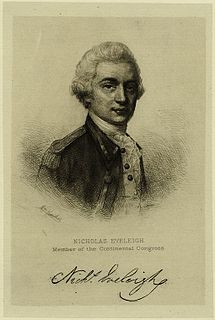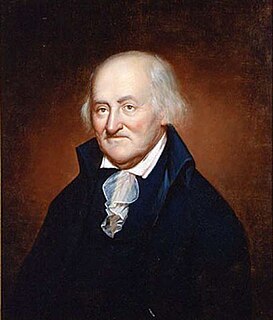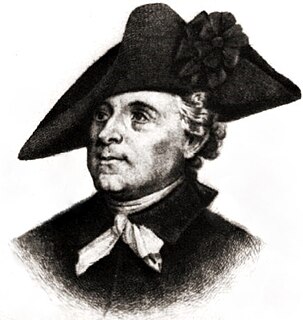 W
WNicholas Eveleigh was an American planter and political leader who was a delegate to the Continental Congress for South Carolina in 1781 and 1782.
 W
WChristopher Gadsden was an American politician who was the principal leader of the South Carolina Patriot movement during the American Revolution. He was a delegate to the Continental Congress, a brigadier general in the Continental Army during the American Revolutionary War, Lieutenant Governor of South Carolina, a merchant, and the designer of the Gadsden flag.
 W
WJohn Faucheraud Grimké was an American jurist who served as Associate justice and Senior Associate Justice of South Carolina's Court of Common Pleas and General Sessions from 1783 until his death. He also served in the South Carolina state legislature from 1782 until 1790. He was intendant (mayor) of Charleston, South Carolina, for two terms, from 1786 to 1788.
 W
WIsaac Huger was a planter and Continental Army general during the American Revolutionary War.
 W
WJames Henry Ladson was an American politician, wealthy plantation owner from Charles Town and officer of the American Revolution. He served as the Lieutenant Governor of South Carolina from 1792 to 1794, and was a member of the South Carolina state Senate from 1800 to 1804.
 W
WFrancis Marion, also known as the Swamp Fox, was a military officer who served in the American Revolutionary War (1775–1783). Acting with the Continental Army and South Carolina militia commissions, he was a persistent adversary of the British in their occupation of South Carolina and Charleston in 1780 and 1781, even after the Continental Army was driven out of the state in the Battle of Camden. Marion used irregular methods of warfare and is considered one of the fathers of modern guerrilla warfare and maneuver warfare, and is credited in the lineage of U.S. Army Rangers and the 75th Ranger Regiment.
 W
WWilliam Moultrie was an American planter and politician who became a general in the American Revolutionary War. As colonel leading a state militia, in 1776 he prevented the British from taking Charleston, and Fort Moultrie was named in his honor.
 W
WAndrew Pickens was a militia leader in the American Revolution. A planter, he developed his Hopewell plantation on the east side of the Keowee River across from the Cherokee town of Isunigu (Seneca) in western South Carolina. He was elected as a member of the United States House of Representatives from western South Carolina. Several treaties with the Cherokee were negotiated and signed at his plantation of Hopewell.
 W
WCharles Cotesworth Pinckney was an early American statesman of South Carolina, Revolutionary War veteran, and delegate to the Constitutional Convention. He was twice nominated by the Federalist Party as its presidential candidate in 1804 and 1808, losing both elections.
 W
WThomas Pinckney was an early American statesman, diplomat, and soldier in both the American Revolutionary War and the War of 1812, achieving the rank of major general. He served as Governor of South Carolina and as the U.S. minister to Great Britain. He was also the Federalist candidate for vice president in the 1796 election.